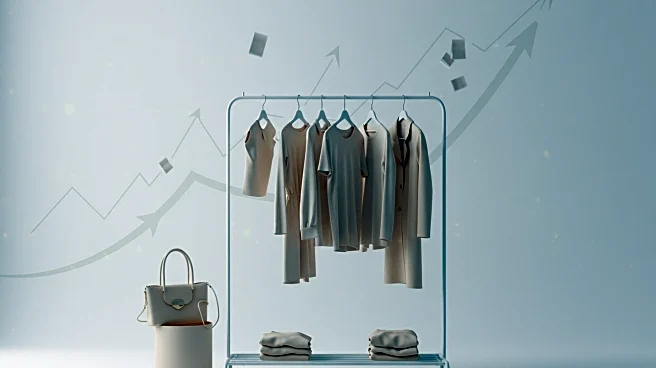What's Happening?
According to the U.S. Bureau of Labor Statistics, apparel prices in July increased by 0.1% from June, although they remain 0.2% lower than the previous year. Overall, consumer prices rose by 0.2% from June, with a 2.7% increase over the past year. The report highlights significant price increases in utility gas services, electricity, and used cars, while gasoline prices saw a notable decline. The data suggests that tariffs are beginning to impact consumer spending in various sectors, although the effect on apparel prices was less pronounced in July compared to June.
Why It's Important?
The slight increase in apparel prices amidst broader inflationary pressures underscores the complex dynamics of consumer pricing in the current economic environment. As tariffs influence costs across different sectors, consumers may face varying price changes, affecting their purchasing decisions. The apparel industry, in particular, may need to navigate these fluctuations carefully to maintain competitiveness. The broader economic implications include potential shifts in consumer behavior and spending patterns, which could influence market trends and business strategies.
What's Next?
As tariffs continue to impact pricing, businesses in the apparel sector may need to explore cost-saving measures and pricing strategies to remain competitive. Consumers might adjust their spending habits in response to changing prices, potentially affecting demand for certain goods. Economic analysts will likely monitor these trends closely to assess the long-term effects on the market and consumer behavior.
















